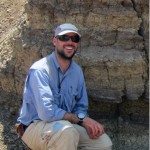Thanks to Ross Mounce for alerting me to this piece of news.
Yours sincerely, The Fossil Record Editors M. Aberhan, D. Korn, F. Witzmann
Thanks to Ross Mounce for alerting me to this piece of news.
Yours sincerely, The Fossil Record Editors M. Aberhan, D. Korn, F. Witzmann
 This is a guest post by Dan Peppe. He is an Assistant Professor in the Geology Department at Baylor University. His research interests are focused on reconstructing ancient climates and ecosystems in North America and East Africa and on developing new and improved palaeoclimate and palaeoecological proxies using methods in paleobotany, sedimentary geology, and paleomagnetism. More information about Dan and his research can be found on his website: www.danielpeppe.com. He also tweets about his research and other interests on his Twitter account (@danpeppe).
This is a guest post by Dan Peppe. He is an Assistant Professor in the Geology Department at Baylor University. His research interests are focused on reconstructing ancient climates and ecosystems in North America and East Africa and on developing new and improved palaeoclimate and palaeoecological proxies using methods in paleobotany, sedimentary geology, and paleomagnetism. More information about Dan and his research can be found on his website: www.danielpeppe.com. He also tweets about his research and other interests on his Twitter account (@danpeppe).
Over the last couple of weeks several blogs and news outlet have reported that a new study published in Frontiers in Plant Science (Hochuli and Feist-Burkhardt, 2013) shows that new fossil pollen push back the origin of flowering plants (angiosperms) by 100 million years to the early Triassic (e.g., LiveScience, BBC, ScienceDaily). The headlines and articles lead a reader to assume that there was new evidence showing that angiosperms were present in the Triassic (252-201 million years ago, Ma). However, the new study actually suggests something quite different that adds to a growing body of evidence pertaining to a larger narrative about the evolution of plants and the evolution of angiosperms.

Fossil charcoalified floras from a Late Cretaceous (Santonian, 86 – 83 Ma) in central Georgia showing amazing 3D preservation and anatomical detail. Images were taken using a scanning electron microscope and are considerably magnified (A magnified X50, B X100, C X20). Flower images are from Figure 4 of Crane et al. (2004).
OK, so the usual joke is Geology rocks, but Catherine Bennett, who describes herself as a “Dinosaur-loving, bike-riding, dog-owning, tuna pasta eating pop star!!” created this cool video with the remixed title. It stars many palaeontologists I know from the UK, and is a really nice way of showcasing the diversity of palaeontologists and palaeontology we have here. Enjoy!
I’m in Berlin. I’ve just managed to find a chicken donner kebab, and am pausing research briefly to write this. I’m currently on leave from London, with a ridiculously hectic couple of months ahead: I’ve just been to Munich to see a dwarf crocodile specimen, Alligatorellus beaumonti (from Bavaria), which conveniently happened to coincide with Oktoberfest, and am now here to visit another specimen, Theriosuchus ibericus, from Spain. Preliminary glances at the material in Berlin makes me think the Spanish material may be a new genus altogether (whatever that actually means), and another broken up specimen of Alligatorellus might be a new species, based on what I can tell from it’s body armour (yeah, these crocs were awesome!)